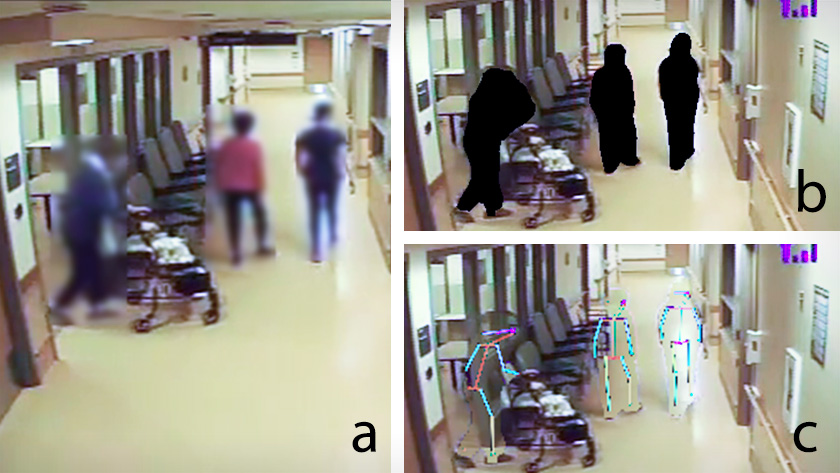
Dr. Shehroz Khan’s research team at KITE Research Institute recently demonstrated that two different video-based approaches were capable of detecting risky behaviours in individuals living with dementia, while maintaining their privacy.
In Canada, around a third of individuals under 80 years of age with dementia reside in long-term care homes. This portion increases to 42% for those older than 80.
Individuals with dementia can display behaviours that put themselves or others at risk. To identify this risk, certain residents in long-term care homes require continuous monitoring, which places a heavy burden on limited resources. While video surveillance is common, the footage is not always monitored and privacy cannot always be guaranteed.
To address these challenges, Dr. Khan’s research team used real-world video surveillance data collected from a dementia care unit and applied two privacy-protecting approaches to analyze the footage. The first approach that they tested uses software to replace the individuals in the video with ‘stick figures’ that model their pose, actions and interactions with others. The second approach is similar, but replaces individuals with silhouettes that model their behaviour.
The team showed that both were as good at detecting high-risk behaviour as traditional methods.
“The algorithms that we’ve developed can read raw video, identify risk and alert staff in time. And by distilling video footage into positional body data, privacy can be guaranteed,” says Pratik Mishra, a graduate student in Dr. Khan’s group and the lead author of the study.
“This is the first study to utilize the skeleton-based method to model behaviours of risk in people with dementia, while de-identifying the individuals featured in the videos,” says Dr. Khan, Scientist at KITE Research Institute.
“Our proposed approaches set a new standard for detecting behaviours of risk in people with dementia. These tools have the potential to improve the quality of life of long-term care residents, while reducing burden on the health care system.”
This work was supported by AGE-WELL NCE Inc, Alzheimer’s Association, Natural Sciences and Engineering Research Council of Canada, Walter and Maria Schroeder Institute for Brain Innovation and Recovery, and the UHN Foundation. Dr. Shehroz S. Khan is the senior author of the study and an Assistant Professor (Status) in the Institute of Biomedical Engineering (BME) at the University of Toronto.
Mishra PK, Iaboni A, Ye B, Newman K, Mihailidis A, Khan SS. Privacy-protecting behaviours of risk detection in people with dementia using videos. Biomed Eng Online. 2023 Jan 21. doi: 10.1186/s12938-023-01065-3.

To protect the privacy of individuals, the team used algorithms to model normal and risky behaviours (a) of people with dementia. Rather than displaying raw video, the technology distills people into silhouettes (b) or stick figures (c).




